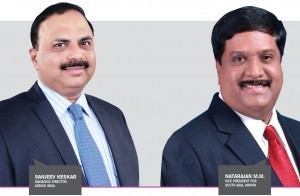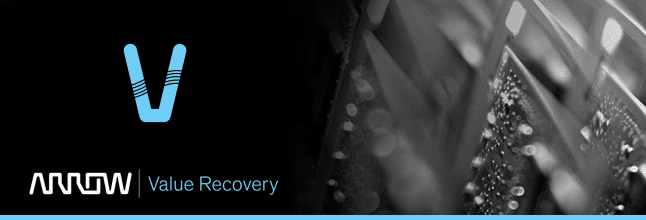The Internet of Things (IoT) is something you see in every sector now. What is driving IoT sales? This interview gets you the answer through a discussion with two leaders from Arrow, a Fortune 500 company that is one of the biggest distributors in the world, thus putting them in the best position to answer this question. Sanjeev Keskar, managing director for Arrow India, and Natarajan M.M., vice president for South Asia for Arrow, speak with Dilin Anand from EFY
Q. What, according to you, will be the biggest driver of IoT-enabled products in India?
A. Maintenance and servicing of equipment are two important elements that are currently driving the IoT in India. Any machine that requires maintenance can automatically message its manufacturer about the impending situation. The message will then go to a cloud, following which diagnostics will be carried out automatically.
The end result is that, instead of sending a technician out to every site to check if the equipment has a fault and then making another trip with the needed parts, the technician will now only need to visit those places where a problem has been identified and he or she will also know exactly how to solve the issue.

Q. What is driving it at the mass consumer front in India?
A. Geographical distances are too big in India. This combined with the high density of population points us to water filters, since that is a very big element in the country. Having a sensor that monitors the purifier status and alerts technicians automatically should work very well. We already have a lot of water purifier brands that could implement this technology and improve their customer satisfaction.
Q. Which application area do you expect to open up on a global scale?
A. Applications like wearables are very promising. This will open up a huge domain so that the physician or doctor will be able to read and identify any physical parameters on the body and provide an accurate diagnosis accordingly.
In cases like an emergency, the patient and the doctor will get an alert saying the body needs maintenance or attention. This can also be extended to the exercise industry.
Q. Most of these are going to be expensive solutions. Do you see some place where the IoT could help reduce the cost of a premium product?
A. In the automotive sector, a smartphone connected to the instrument cluster of a two-wheeler could help enable navigation systems without adding to the cost of making a two-wheeler. Developing an automotive-grade infotainment system by itself would be expensive, but by using an existing solution to enable the feature would be extremely cost-effective for the end user.
Q. Which top three IoT products are driving component sales right now?
A. Tire-pressure-monitoring systems are definitely driving a lot of sales.
Energy meters with automatic reading combined with an integrated Global System for Mobile communications module to transmit periodically is another.
Tracking devices designed to show where you can track your kid through your mobile is the third that is also popular.
Q. Since you deal with a lot of semiconductor players, what, in your experience, are they focusing on at the moment in the IoT space?
A. While the four key elements are sensors, actuators, connectivity and data management, battery life and software compatibility are also important.
ZigBee, sub-gigahertz, General Packet Radio Service and Long Term Evolution connectivity are what many are looking at, but we are seeing controllers with Bluetooth Low Energy and Wi-Fi integrated right into these, too.
At an architecture level, even the 8-bit and 16-bit are evolving. Everyone is taking the approach of the system on chip, where you require minimum peripheral components for a specific target application.
Q. What about the analogue-to-digital front?
A. A lot of peripheral analogue-to-digital converters as well as microcontrollers integrated with sensors are popular, too. We have already seen conventional sensors for temperature, pressure, acceleration, motion and speed. Now, we are seeing gesture sensors that can be put into a treadmill or automotive.
You might remember semi-autonomous motorcar (SAM) from last year that allowed the driver to accelerate with his head, while controlling the brakes and steering with movements of his neck. That is one example.
Q. What are your views about the IoT and India?
A. India is in a unique position for the IoT space because of all smart engineers and start-ups that are working on a variety of designs for medical, machine to machine and wearables. The biggest challenge that I have faced is caused by the sheer number of start-ups here. They are very large in number, so we have to spend a lot of resources on working out how to identify the right company with whom we should engage, or whom we should select by balancing priorities.
Q. How is the semiconductor industry helping drive the adoption of newer technology by these start-ups?
A. Today, we have modules and not just chips like we used to. It has become very easy to interface with any application if you have a serial peripheral interface or universal serial bus port.
System on module are also available from many vendors for start-ups to get started with their build and design. This way, they can get customer acceptance easily, and only then do they need to develop and integrate it with their customers’ requirement.













